What are Opae ula shrimp?
Page Index:
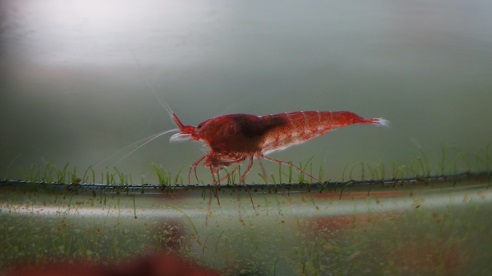
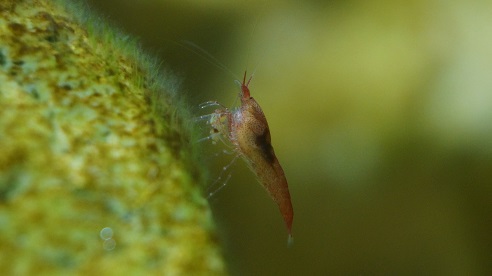
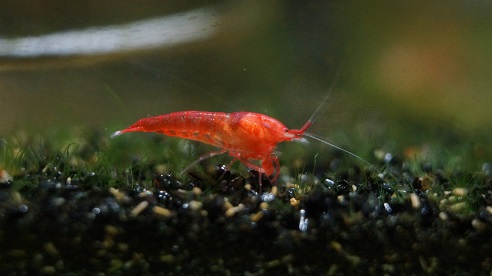
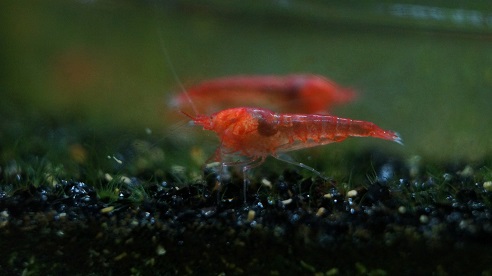
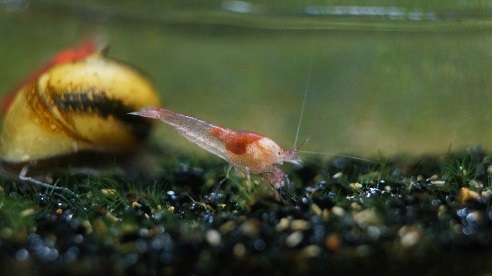
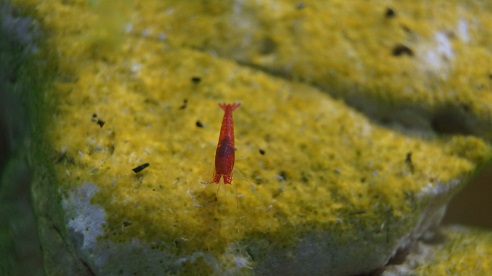
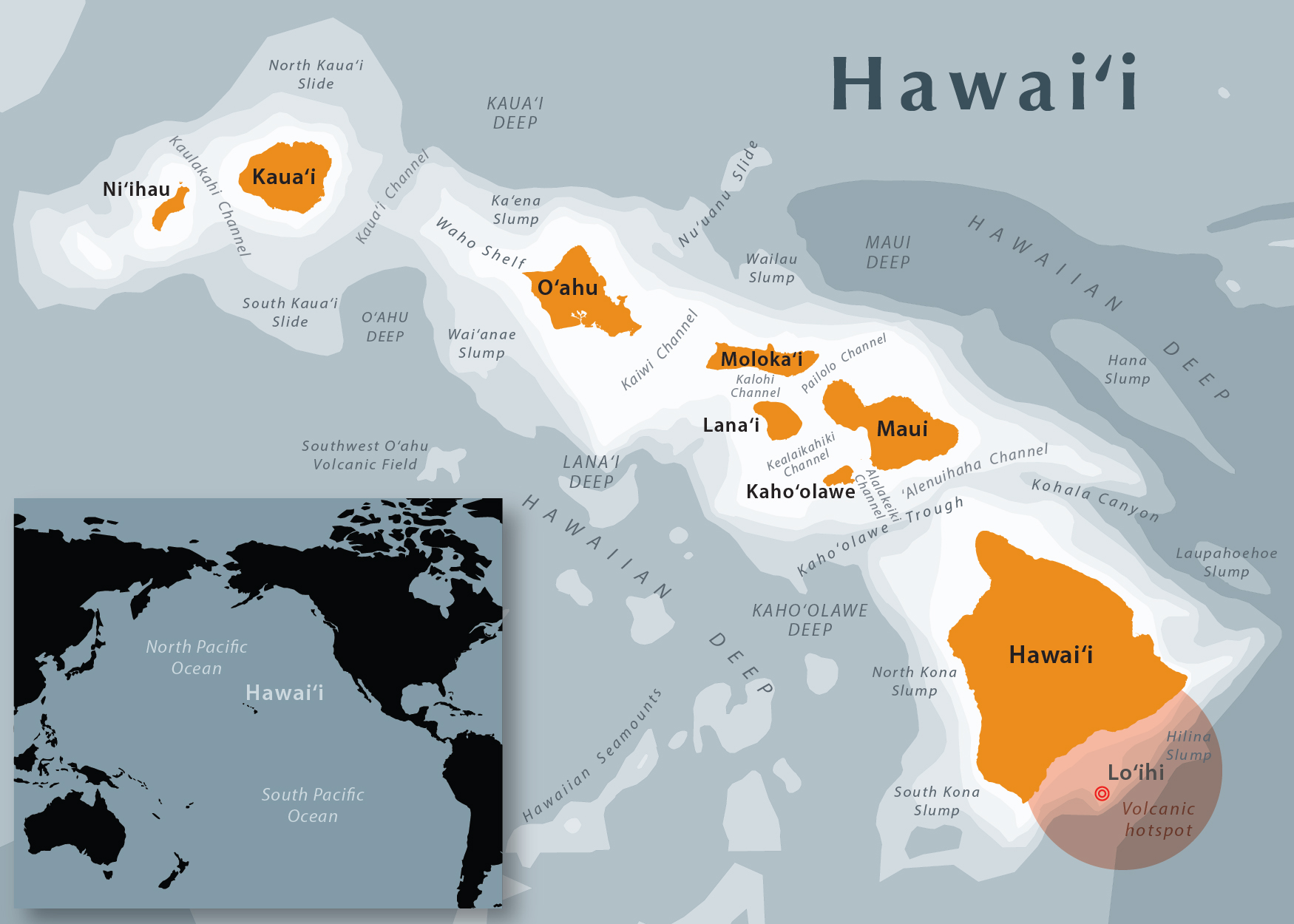
Water levels in anchialine pools often fluctuate with tidal changes due to the coastal location and the connection with the ocean. The range in water levels fluctuations will be decreased (damped) and delayed compared to the range and time observed for the adjacent tide. The primary controls on the damping and lag are the distance from the coast, and the hydraulic conductivity of the geological materials.
Anchialine pools are extremely common worldwide especially along neo-tropical coastlines where the geology and aquifer system are relatively young, and there is minimal soil development. Such conditions occur notably where the bedrock is limestone or recently formed volcanic lava. Many anchialine pools are found on the coastlines of the island of Hawaii, and on the Yucatán Peninsula, where they are locally called cenotes as well as Christmas Island.
Ecological studies of anchialine pools frequently identify regionally rare and sometimes endemic species living in them. In Hawaii, the pools are home to mostly the ʻōpaeʻula (Hawaiian shrimp, Halocaridina rubra). The Sailor's Hat crater created by an explosives test in 1965 is an anchialine pool.
In karst anchialine pools and the caves these may be connected to, the fauna are diverse and include: crustaceans including remipedia and copepods, and among the vertebrates are several species of blind cave fish and eels.
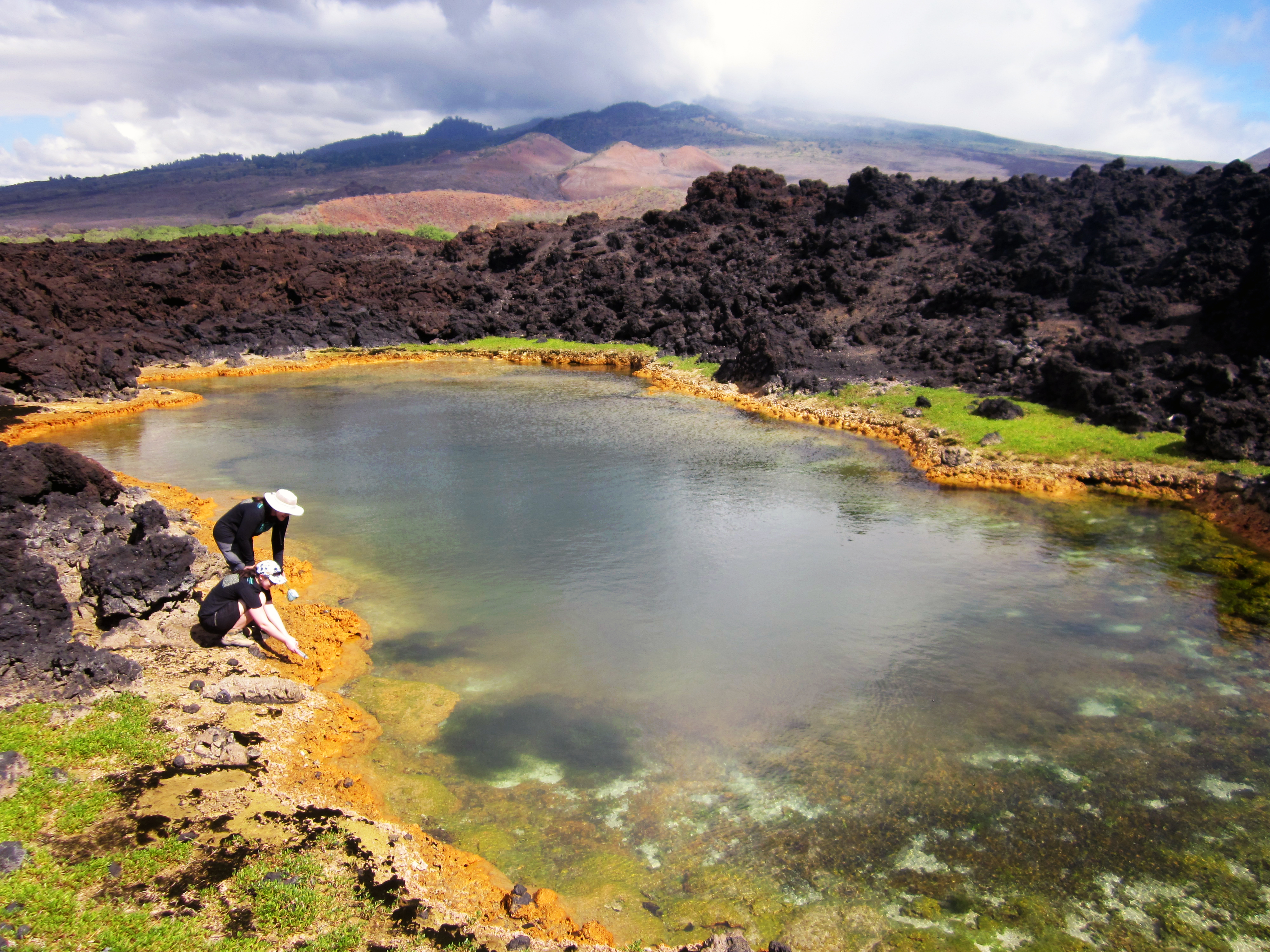
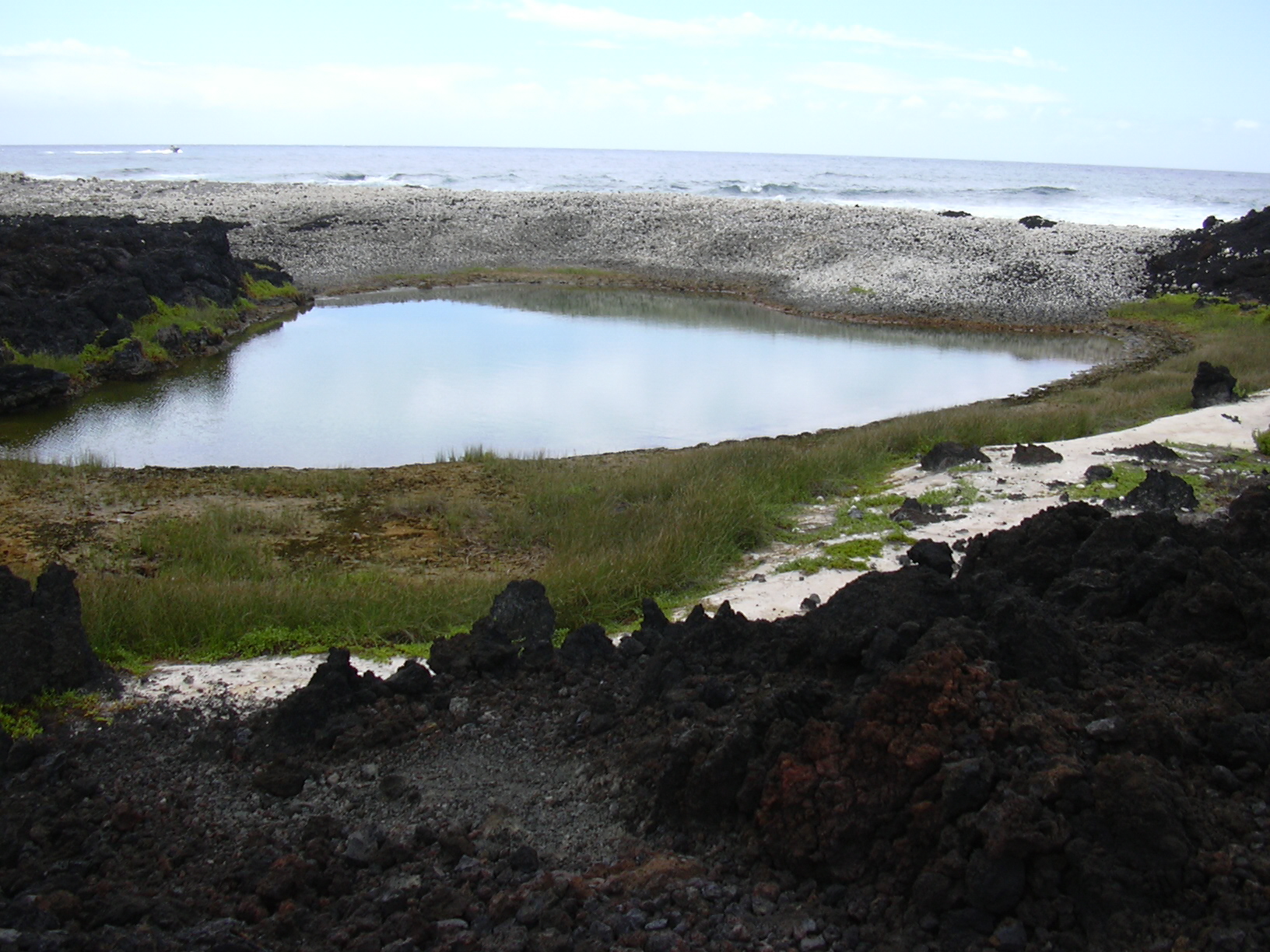
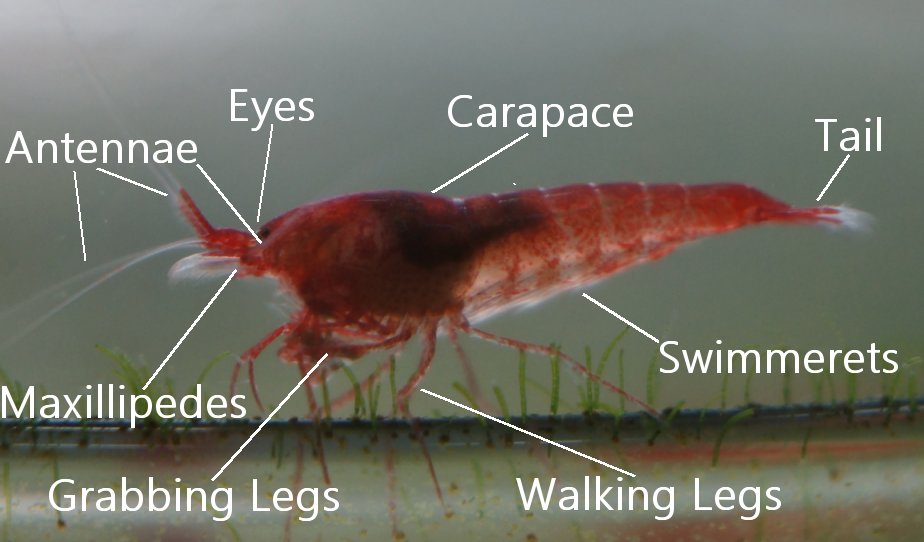
These guys grow roughly to around 1 - 1.5 cm (0.39 - 0.59 inchs) in length.
Life span
If the Opae ula shrimp has adequate and healthy conditions to live in with a good food source, you may get to see these little red shrimp reach the age of 20 years old!
Reproduction
Usually these shrimp will breed several times a year in the correct conditions, they carry far less eggs when burried (typicaly 8 - 15) compared to fresh water shrimps but what they lack in quantity they make up in overall size. Between carrying the eggs and releasing offspring the Opae ula goes through a free swimming larvae stage which are planktonic filter-feeders.
Gender
This shrimps sex is difficult to distinguish and especially so at a young age, the saddle and clutch of eggs are the easiest way to tell the sex of these shrimp.
Habitat
The anchialine pools (Brackish pools) in Hawaii home the Opae ula shrimp, Fluctuating salinity (salt) levels from the sea mixed with the fresh water inland and temperature mean not many living things can survive in the ever changing water type and that's what makes this shrimp very hardy.
• Halocaridina rubra
• 'Ōpae'ula shrimp
• Opae ula
• Supershrimp
• Hawaiian shrimp
• Micro lobsters
• Volcano shrimp
• Red shrimp
• Brackish shrimp
• Rote Hawaiigarnele (German)
• La crevette rouge hawaïenne (French)
What are Opae ula shrimp?
Why keep them as a pet?
What do they eat if you dont feed them?
Where do Opae ula come from?
What are Anchialine pools?
Basic Opae ula Anatomy
Interesting facts
The many names of the Opae ula shrimp
What are Opae ula shrimp?
Opae ula are a species of red brackish water shrimp known as Halocaridina Rubra which are indigenous to Hawaii, the name 'Opae ula' also originates from Hawaii and translates into 'red shrimp'. There are many small red shrimp species in Hawaii but Halocaridina Rubra (Opae ula) is by far the most common thus getting a shorter common nickname, while a few other lesser known species have been given similar names such as the 'Opae Lolo'. The Opae ula shrimp usually grows to an average size of 1cm(0.39inch) to 1.5cm(0.59inch) and because of their recent popularity as a low-maintenance/desktop pet in Hawaii it has brought this otherwise obscure decapod crustacean into popular consciousness. A long-lived species, Opae ula have been known to live for as long as 20 years in captivity. Sexes are difficult to distinguish, but gravid females carry clusters of red/maroon eggs under their pleopods and early larvae are planktonic filter-feeders. They occasionally molt their shells, which can be seen as silvery exoskeletons at the bottom of the tank. There may be some evidence that Opae ula mate after molting, or that molting and mating may be related.





Why keep them as a pet?
The Opae ula shrimp is extremely easy to keep as a pet, they don't require being fed additional food if you have adequate lighting to grow algae in the tank as their food source and you don't have to change any water in their tank! All you need to do is top up their tank once in a while with some clean RO/distilled/bottled water when evaporation lowers and drops your tanks water level down and that's it! They are so much fun to watch and if you are lucky they will breed! Opae ula shrimp can live quite happily in a small tank and make great desktop pets that can live for up to 20 years so they really are a low to zero maintenance pet which is great for kids and interested adults alike!What do they eat if you dont feed them?
Opae ula are herbivorous and detritivorous shrimp occupying both hypogeal (subterranean) and epigeal (surface) anchialine waters. Typical food of Opae ula is algal and bacterial mats that grow naturally on the surface of rocks and other substrates in anchialine pools and your shrimp tank. Chelipeds are adapted for scraping and filtering of algal-bacterial layers. Serrated setae scrape the substrate surface, and filamentous setae collect the loosened food materials. The latter can also act as filters for filter feeding during phytoplankton blooms. The grazing activity of this shrimp is essential in maintaining the integrity of the crust, an actively growing matrix of plants, bacteria, diatoms, protozoans, and underlying siliceous and carbonate materials. Halocaridina is well adapted to the epigeal-hypogeal habitat in the natural pools. It reproduces in the subterranean portion of the habitat.Where do Opae ula come from?
Halocaridina rubra (Opae ula) is endemic to the Hawaiian islands, and most commonly found in anchialine pools in fresh lava substrates on Hawaiʻi and Maui Island. it has also been found in limestone karst pools and hypogeal habitats in limestone on older islands, such as Oʻahu. Its habitat is unique and sparsely represented on five of the eight high Hawaiian Islands (Maui, Kahoʻolawe, Oʻahu, Molokaʻi and Hawaiʻi).
What are Anchialine pools?
An anchialine pool or pond (pronounced "AN-key-ah-lin", from Greek ankhialos, "near the sea") is a landlocked body of water with a subterranean connection to the ocean. Anchialine pools are a feature of coastal aquifers which are density stratified, with the water near the surface being fresh or brackish, and saline water intruding from the coast below at some depth. Depending on the site, it is sometimes possible to access the deeper saline water directly in the anchialine pool or sometimes it may be accessible by cave diving.Water levels in anchialine pools often fluctuate with tidal changes due to the coastal location and the connection with the ocean. The range in water levels fluctuations will be decreased (damped) and delayed compared to the range and time observed for the adjacent tide. The primary controls on the damping and lag are the distance from the coast, and the hydraulic conductivity of the geological materials.
Anchialine pools are extremely common worldwide especially along neo-tropical coastlines where the geology and aquifer system are relatively young, and there is minimal soil development. Such conditions occur notably where the bedrock is limestone or recently formed volcanic lava. Many anchialine pools are found on the coastlines of the island of Hawaii, and on the Yucatán Peninsula, where they are locally called cenotes as well as Christmas Island.
Ecological studies of anchialine pools frequently identify regionally rare and sometimes endemic species living in them. In Hawaii, the pools are home to mostly the ʻōpaeʻula (Hawaiian shrimp, Halocaridina rubra). The Sailor's Hat crater created by an explosives test in 1965 is an anchialine pool.
In karst anchialine pools and the caves these may be connected to, the fauna are diverse and include: crustaceans including remipedia and copepods, and among the vertebrates are several species of blind cave fish and eels.


Basic Opae ula Anatomy

Interesting facts
SizeThese guys grow roughly to around 1 - 1.5 cm (0.39 - 0.59 inchs) in length.
Life span
If the Opae ula shrimp has adequate and healthy conditions to live in with a good food source, you may get to see these little red shrimp reach the age of 20 years old!
Reproduction
Usually these shrimp will breed several times a year in the correct conditions, they carry far less eggs when burried (typicaly 8 - 15) compared to fresh water shrimps but what they lack in quantity they make up in overall size. Between carrying the eggs and releasing offspring the Opae ula goes through a free swimming larvae stage which are planktonic filter-feeders.
Gender
This shrimps sex is difficult to distinguish and especially so at a young age, the saddle and clutch of eggs are the easiest way to tell the sex of these shrimp.
Habitat
The anchialine pools (Brackish pools) in Hawaii home the Opae ula shrimp, Fluctuating salinity (salt) levels from the sea mixed with the fresh water inland and temperature mean not many living things can survive in the ever changing water type and that's what makes this shrimp very hardy.
The many names of the Opae ula shrimp
The Opae ula shrimp has many different names and i have listed a few of them below, this should help you search for these little red shrimps online as different country's and websites call them by different names, such as;• Halocaridina rubra
• 'Ōpae'ula shrimp
• Opae ula
• Supershrimp
• Hawaiian shrimp
• Micro lobsters
• Volcano shrimp
• Red shrimp
• Brackish shrimp
• Rote Hawaiigarnele (German)
• La crevette rouge hawaïenne (French)
